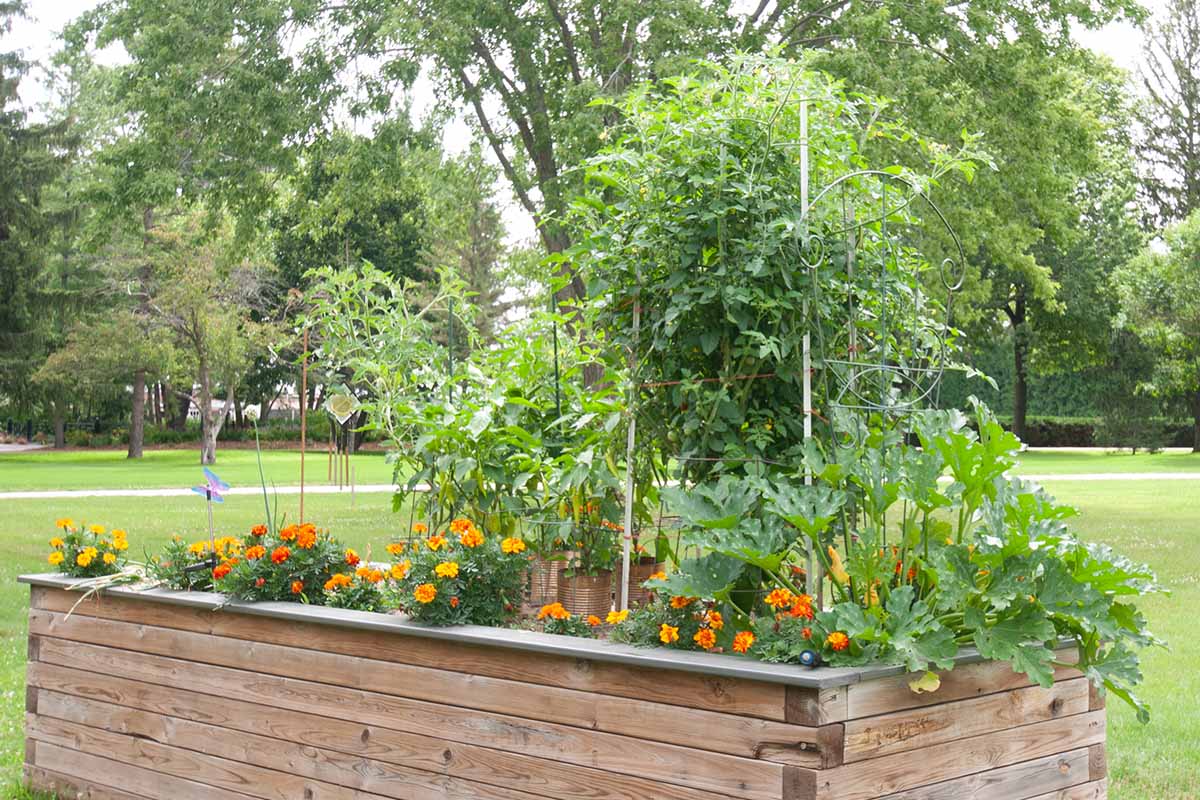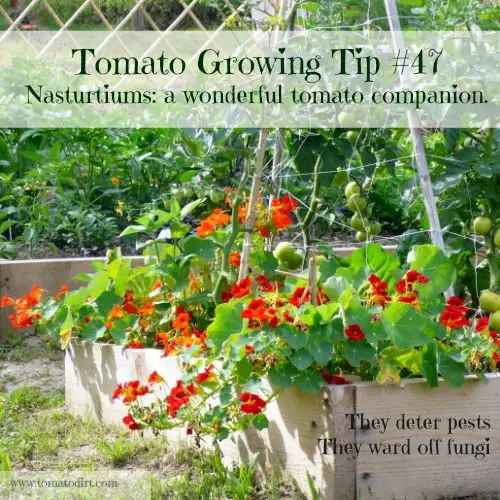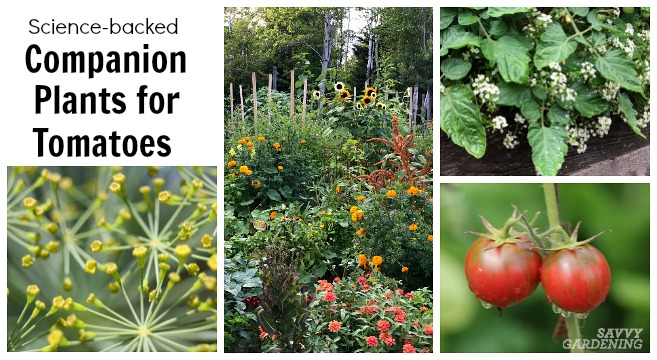The Best Partner Plants For Tomatoes
The Best Partner Plants for Tomatoes
Tomatoes are a popular garden vegetable that can be grown in many different climates. However, there are some plants that can be grown alongside tomatoes to help improve their growth and productivity. These are known as companion plants.
There are many different companion plants that can be grown with tomatoes, but some of the best include:
- Basil: Basil is a classic companion plant for tomatoes. It helps to deter pests such as aphids and tomato hornworms, and it also improves the flavor of tomatoes.
- Marigolds: Marigolds are another great companion plant for tomatoes. They help to repel nematodes, which can damage tomato roots. Marigolds also attract beneficial insects, such as ladybugs, which help to control pests.

- Borage: Borage is a flowering plant that helps to attract pollinators, such as bees and butterflies. These pollinators help to increase the fruit set of tomatoes. Borage also has some insecticidal properties, which can help to deter pests.
- Chives: Chives are a member of the onion family, and they help to repel pests such as aphids and spider mites. Chives also help to improve the flavor of tomatoes.
- Nasturtiums: Nasturtiums are another flowering plant that attracts pollinators. They also help to deter pests such as aphids and whiteflies. Nasturtiums can also be used as a living mulch around tomato plants, which helps to suppress weeds and retain moisture.

- Beans: Beans are legumes, which means that they can fix nitrogen in the soil. This can help to improve the fertility of the soil for tomatoes. Beans also help to suppress weeds, which can compete with tomatoes for resources.
- Peas: Peas are another legume that can fix nitrogen in the soil. They also help to suppress weeds, and they can provide shade for tomato plants during the hot summer months.
In addition to these plants, there are many other companion plants that can be grown with tomatoes. It is important to do some research to find the best companion plants for your specific climate and growing conditions.
When choosing companion plants for tomatoes, it is important to consider the following factors:
- Plant spacing: Some companion plants, such as beans and peas, can grow quite tall. It is important to plant these plants far enough away from tomatoes so that they do not shade the tomato plants.
- Nutrient requirements: Some companion plants, such as beans and peas, are heavy feeders. It is important to plant these plants in a location where they will not compete with tomatoes for nutrients.
- Pest and disease resistance: Some companion plants, such as marigolds and nasturtiums, have insecticidal or fungicidal properties. These plants can help to protect tomatoes from pests and diseases.
By planting the right companion plants alongside your tomatoes, you can help to improve their growth and productivity. You can also help to protect your tomatoes from pests and diseases.
Partner Plants for Tomatoes
Tomatoes are a popular garden vegetable, but did you know that there are certain plants that can help them grow better? These are called partner plants, and they can help to repel pests, attract pollinators, and improve the overall health of your tomato plants.
Some of the best partner plants for tomatoes include:
- Basil - Basil is a classic companion plant for tomatoes, and it has been shown to improve the flavor of tomatoes. It also helps to repel aphids and other pests.
- Marigolds - Marigolds are another great companion plant for tomatoes, and they help to repel nematodes, which can damage tomato roots.
- Chives - Chives help to repel tomato hornworms, and they also add flavor to tomato dishes.
- Asparagus - Asparagus helps to improve the soil drainage around tomato plants, which can help to prevent diseases.
- Peppers - Peppers help to attract pollinators, which can help to increase the fruit set of tomato plants.
If you're looking for ways to improve the health and productivity of your tomato plants, consider planting some of these partner plants. You can find more information about companion planting for tomatoes at Home Gardening.
FAQ of partner plants for tomatoes
- What are the best companion plants for tomatoes?
Some of the best companion plants for tomatoes include:
Basil: Basil is a classic companion plant for tomatoes, and for good reason. It helps to repel pests, such as thrips, aphids, and tomato hornworms. It also helps to improve the flavor of tomatoes.
Marigolds: Marigolds are another great companion plant for tomatoes. They help to repel nematodes, which can damage tomato roots. They also help to attract pollinators, which help to pollinate tomato flowers.
Chives: Chives help to repel aphids and other pests. They also help to improve the flavor of tomatoes.
Asparagus: Asparagus helps to improve the flavor of tomatoes. It also helps to suppress weeds.
Lettuce: Lettuce helps to attract beneficial insects, such as ladybugs and lacewings. These insects help to control pests.
What plants should I avoid planting near tomatoes?
There are a few plants that you should avoid planting near tomatoes. These include:
Brassicas: Brassicas, such as broccoli, cabbage, and cauliflower, compete with tomatoes for nutrients.
Corn: Corn can stunt the growth of tomato plants.
Fennel: Fennel can cross-pollinate with tomatoes, which can lead to the production of inferior tomatoes.
Dill: Dill can compete with tomatoes for nutrients.
Potatoes: Potatoes are a member of the nightshade family, and they can share the same diseases as tomatoes.
How do companion plants benefit tomatoes?
Companion plants can benefit tomatoes in a number of ways. They can:
Repel pests: Some companion plants, such as marigolds and chives, help to repel pests that can damage tomato plants.
Attract pollinators: Some companion plants, such as marigolds and nasturtiums, attract pollinators, which help to pollinate tomato flowers.
Improve the flavor of tomatoes: Some companion plants, such as basil and chives, can improve the flavor of tomatoes.
Suppress weeds: Some companion plants, such as asparagus and lettuce, can suppress weeds.
How far apart should companion plants be planted?
The distance that companion plants should be planted apart depends on the specific plants. However, as a general rule, you should plant companion plants at least 12 inches apart. This will give them enough space to grow and thrive.
Image of partner plants for tomatoes
10 different images of partner plants for tomatoes that are free to use:
- Basil: Basil is a classic companion plant for tomatoes. It helps to repel pests and attract beneficial insects.
- Cucumbers: Cucumbers and tomatoes have similar growing requirements, so they can be planted together. They also help to shade the soil, which can help to keep tomatoes cool.
- Marigolds: Marigolds are another popular companion plant for tomatoes. They help to repel nematodes, which are a common pest of tomatoes.

- Nasturtiums: Nasturtiums are not only beautiful flowers, but they also help to attract beneficial insects and repel pests.

- Onions: Onions and tomatoes can be planted together to help repel root-knot nematodes.
- Peas: Peas can be planted at the base of tomato plants to help fix nitrogen in the soil.
- Potatoes: Potatoes and tomatoes can be planted together to help suppress weeds.
- Spinach: Spinach can be planted between tomato plants to help shade the soil and prevent weeds from growing.

- Sweet Basil: Sweet basil is a type of basil that is known for its sweet flavor. It can be planted near tomatoes to help improve the flavor of the tomatoes.
- Thyme: Thyme is a herb that is known for its medicinal properties. It can be planted near tomatoes to help protect them from pests and diseases.
Post a Comment for "The Best Partner Plants For Tomatoes"